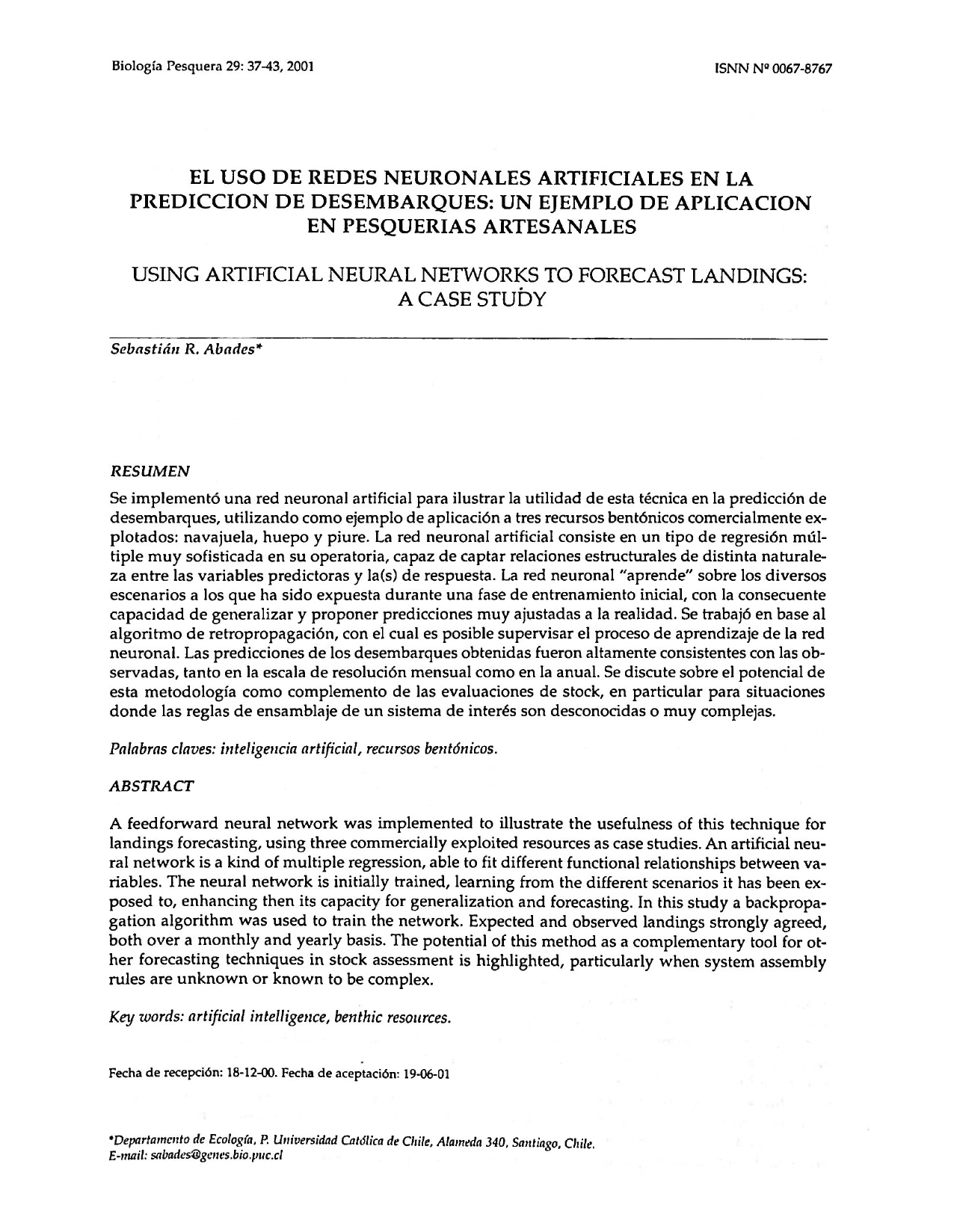El uso de redes neuronales artificiales en la predicción de desembarques: un ejemplo de aplicación en pesquerías artesa00nales.
DOI:
https://doi.org/10.21703/0067-8767.2001.29.2616Palabras clave:
inteligencia artificial, recursos bentónicos.Resumen
Se implemento una red neuronal artificial para ilustrar la utilidad de esta técnica en la predicción de desembarques, utilizando como ejemplo de aplicación a tres recursos bentónicos comercialmente explotados: navajuela, huepo y piure. La red neuronal artificial consiste en un tipo de regresión múltiple muy sofisticada en su operatoria, capaz de captar relaciones estructurales de distinta naturaleza entre las variables predictoras y la(s) de respuesta. La red neuronal "aprende" sobre los diversos escenarios a los que ha sido expuesta durante una fase de entrenamiento inicial, con la consecuente capacidad de generalizar y proponer predicciones muy ajustadas a la realidad. Se trabajó en base al algoritmo de retropropagación, con el cual es posible supervisar el proceso de aprendizaje de la red neuronal. Las predicciones de los desembarques obtenidas fueron altamente consistentes con las observadas, tanto en la escala de resolución mensual como en la anual. Se discute sobre el potencial de esta metodología como complemento de las evaluaciones de stock, en particular para situaciones donde las reglas de ensamblaje de un sistema de interés son desconocidas o muy complejas.


